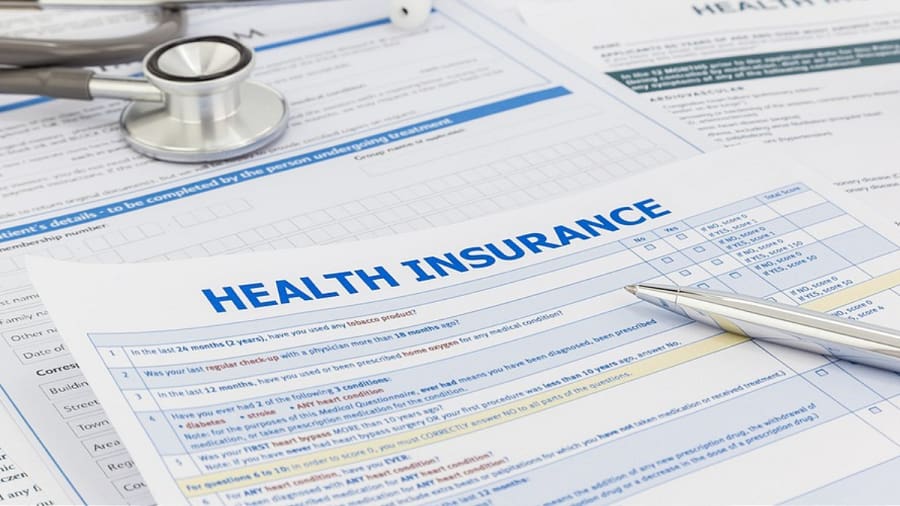


Are you planning a trip to the US? If yes, it is crucial to consider visitor insurance to protect yourself from unexpected medical expenses. Visitor insurance offers financial coverage for medical emergencies, accidents, and other unforeseen events that may occur during your visit. Before you decide to buy one, here are 7 essential features that you must know about.
There are two types of visitor insurance plans available:
a). Comprehensive plans: Comprehensive plans offer broader and more extensive coverage, including hospitalization, doctor visits, emergency care, prescription medications, laboratory tests, and other necessary medical services with higher premiums and higher benefit limits.
b). Fixed benefits plans: Fixed benefit plans offer predetermined fixed amounts of coverage for specific medical services or conditions. These plans have a set list of benefits and corresponding maximum limits for each covered service with lower premiums.
A PPO network consists of a network of healthcare providers, such as doctors, hospitals, clinics, and specialists, that have contracted with the insurance company to provide services at negotiated rates. When visiting a healthcare provider within the PPO network, policyholders can benefit from in-network coverage. This means that the insurance company will typically cover a higher percentage of the medical expenses incurred, and policyholders may have lower out-of-pocket costs compared to going out-of-network.
Deductibles, coinsurance, and copay are common cost-sharing mechanisms found in visitor insurance plans. These features determine the portion of medical expenses that policyholders are responsible for paying out of pocket.
a). Deductible: It is the fixed amount that a policyholder must pay before the insurance coverage begins. Suppose you have a visitor insurance plan with a $500 deductible. If you incur $2,000 in covered medical expenses, you will need to pay the initial $500, after which the insurance can begin coverage according to the policy’s coverage terms.
b). Coinsurance: It is the percentage of medical expenses that the policyholder is responsible for paying after the deductible has been met. Common coinsurance ratios include 90/10, 80/20, or 70/30, indicating the percentage paid by the insurance company and the policyholder, respectively. For example, your visitor insurance plan has a 70/30 coinsurance ratio. After you have paid the deductible, the insurance company will cover 70% of the covered medical expenses, and you will be responsible for the remaining 30%. If you have $ 2,000 in covered medical expenses, the insurance company would pay $1,400, and you would pay $600. Co-insurance is typically up to a certain amount after which the plan pays the rest up till the chosen policy maximum. E.g., 90/10 till the first $5000
c). Copay: It is the fixed amount a policyholder must pay out of pocket for certain covered medical services or prescriptions. Copays are typically associated with specific covered services, such as doctor visits, specialist consultations, prescription medications, or urgent care visits. For instance, you have a visitor insurance plan with a $30 copay for Urgent care visits. You visit a doctor for a check-up due to an illness/injury, and the total cost of the visit is $150. In this case, you pay the $30 copay, and the insurance company covers the remaining $120 of the doctor’s fee.
Visitor insurance plans do not cover pre-existing conditions, rather some of these plans may cover the acute onset of pre-existing conditions. The concept of “acute onset of pre-existing conditions” coverage is an important feature to consider when evaluating visitor insurance plans. This coverage provides a level of protection for sudden and unexpected flare-ups related to pre-existing medical conditions.
Under this benefit, the visitor insurance plan may provide coverage for the medical expenses associated with the acute episode of a pre-existing condition. This can include emergency medical treatment, hospitalization, and related services needed to stabilize the situation within 24 hours of occurrence. However, the exact definition of acute onset may vary between insurance providers and policies. So, it is important to carefully review the terms and conditions of the plan you are considering.
A critical feature to consider in visitor insurance is emergency medical evacuation coverage. In the event of a severe illness or injury that requires specialized medical treatment, this benefit ensures that you are transported to the nearest equipped medical facility or sometimes repatriated to your home country for the best care. This coverage is essential as medical evacuation expenses can be substantial, and arranging transportation during a medical emergency can be complex and costly.
Visitor insurance plans often include 24/7 assistance services as a valuable feature. This means that policyholders have access to round-the-clock support and guidance, ensuring help is available at any time, day, or night. This immediate access to support can be particularly beneficial during emergencies or when facing unexpected situations. In case of a medical emergency, the 24/7 assistance service is available to provide guidance and support, including assistance in locating nearby medical facilities, advice on the appropriate steps to take, and coordination with healthcare providers if needed.
Claims and billing processes are important aspects to understand to navigate the reimbursement process and manage your expenses effectively. Depending on the specific terms of your plan, you may be required to pay for the medical services upfront at the time of service, especially if you are visiting an out-of-network provider. In such cases, you will need to keep the itemized bills and payment receipts for reimbursement.
Submit the claim documentation to your insurance provider. Once it is submitted, the insurance company will review the documentation and verify the papers. This process may involve coordination with healthcare providers, reviewing medical records, and evaluating the appropriateness of the services rendered.
Visitor insurance plans come with several essential features that are crucial to consider when selecting coverage for your visit. Are you looking for the right plan for your US visit? Call us now!